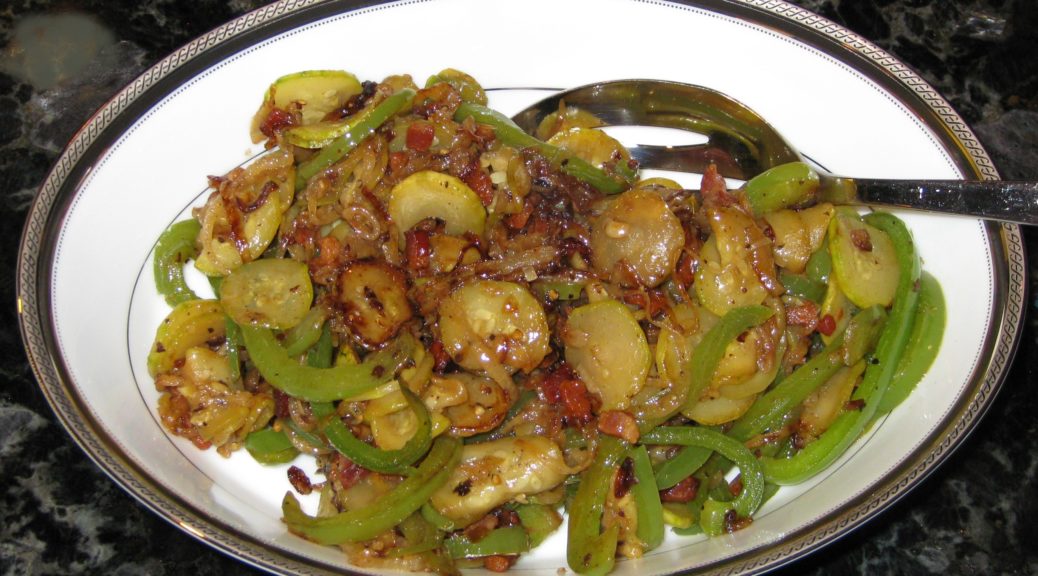February 28, 2018
As a freshman in college who made tentative forays into non-Western European cuisines, I was transformed into a person who couldn’t find a cuisine he wouldn’t try, and didn’t like, by the end of sophomore year.
Junior year was really an intensive study in cooking. It’s the year I became a respectable Sri Lankan, Indian, Chinese, and West Indian cook. There were many other cuisines that I dabbled in but those four formed the basis of what I cooked during the year. By then I considered myself a good Italian cook but my repertory and skill level have expanded significantly since then.
Starting junior year, and for many years thereafter, Reggie and Nanacy Rajapakse taught me much of what I know of Sri Lankan food. Several cookbooks by Charmaine Solomon, as well as the [Ceylon] Daily News Cookery Book, provided much additional guidance. Several trips to Sri Lanka with Nanacy, many years later, confirmed to me that I had captured the taste of Sri Lankan food.
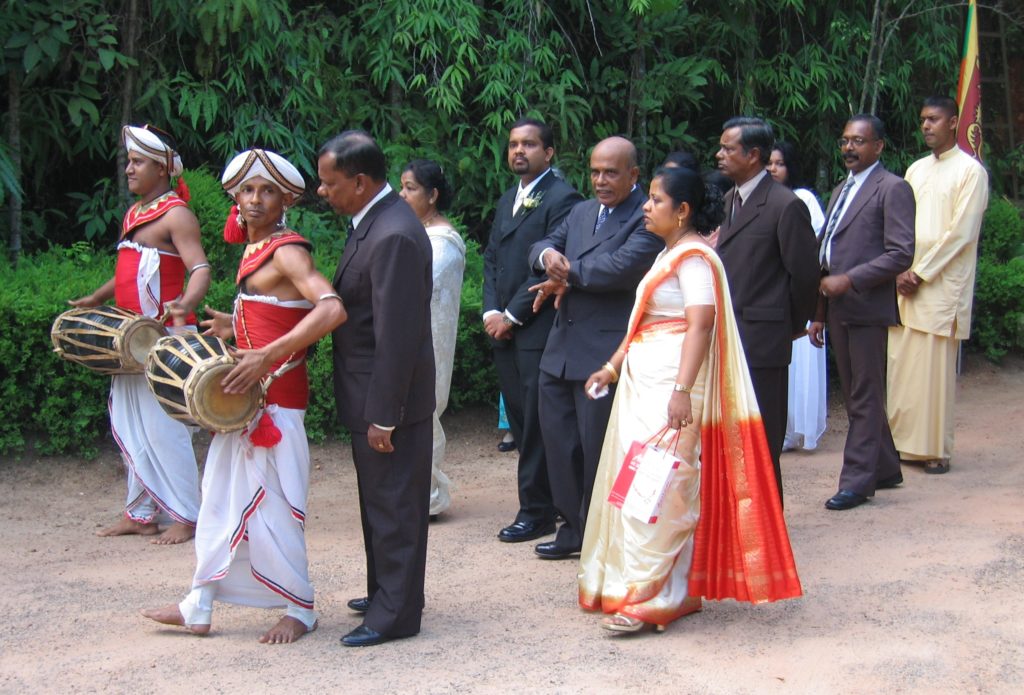
I understand that Sri Lankan food may be a stretch for some of my readers but I really want to introduce you to it. As a starting point, I’ve selected a vegetable dish that pairs really well with a wide range of cuisines, Zucchini and Peppers with Fennel Seed and Cinnamon.
Follow us on your social media platform of choice
I actually made this a few weeks ago at an otherwise all-Italian meal. It paired really well. The dinner guests, all of whom were Italian, didn’t think for a moment that it wasn’t Italian!
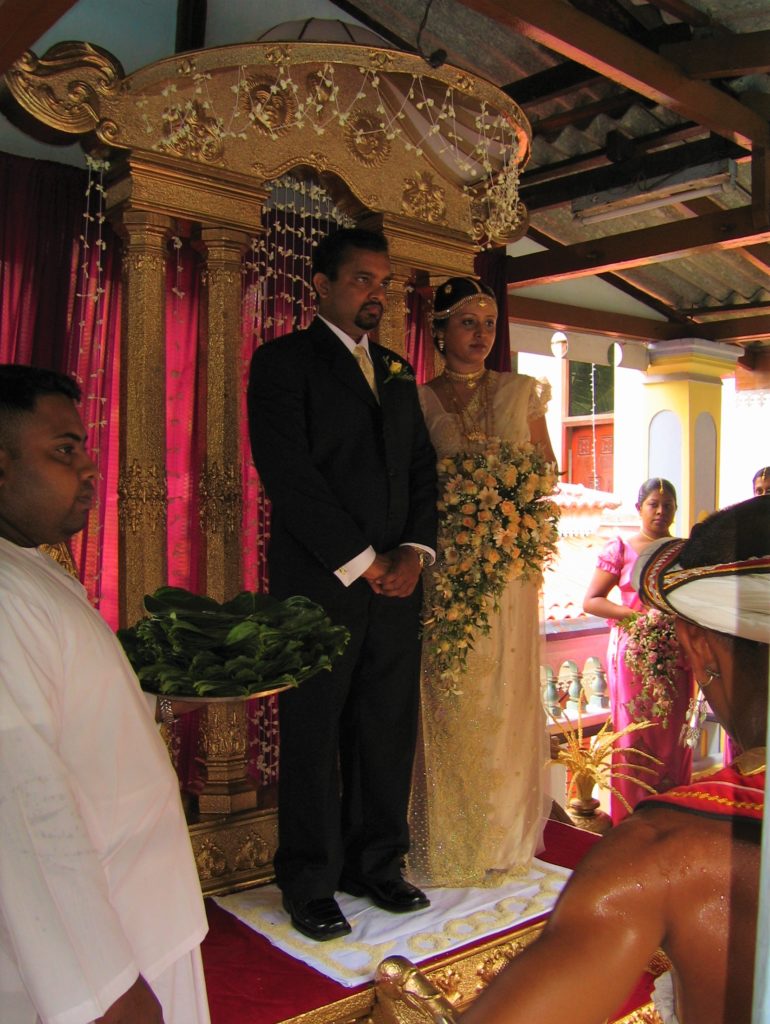
It’s an example of a style of cooking vegetables in Sri Lanka called tempering. The vegetables are cut into relatively small pieces. Aromatics (onion, garlic, ginger, etc.), depending on the dish, are first sautéed. The vegetables and seasonings are added and everything is cooked relatively quickly, 10 minutes or so depending on the vegetable.
Most Sri Lankans are ethnically Sinhalese. The next largest group are Tamils, followed by individuals of Arab descent (called Moors locally). Typically, Sinhalese are Buddhist, Tamils are Hindu, and Moors are Muslim. There is a smattering of others ethnic groups and religions.
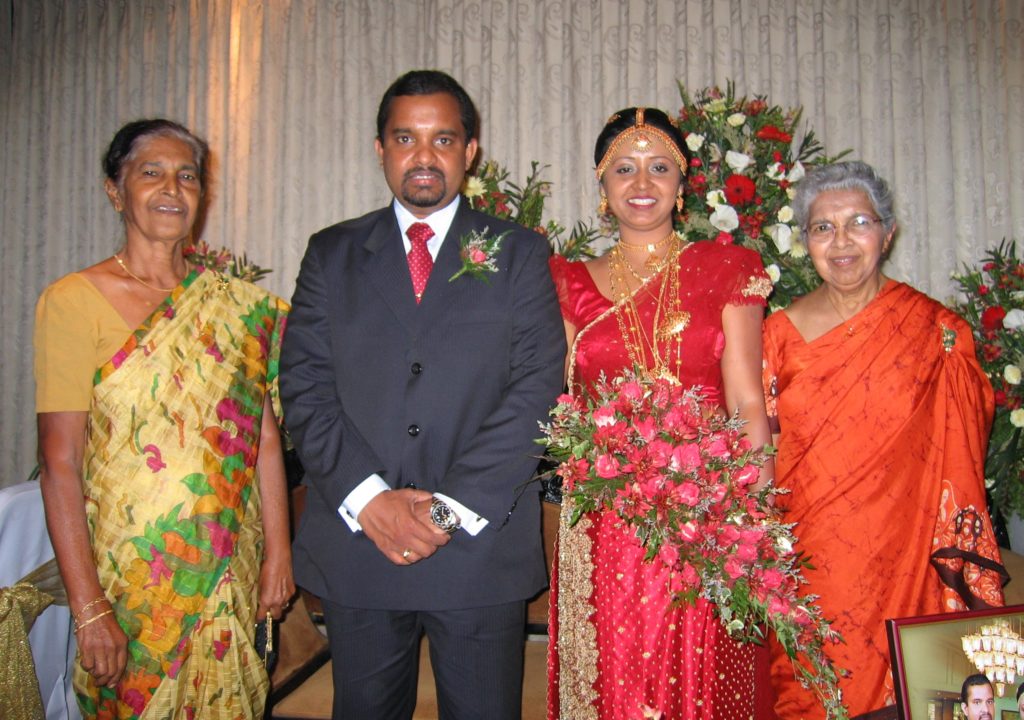
Hindus and Buddhists in South Asia, are nominally vegetarian. Muslims typically don’t eat pork. This recipe, which is ethnically Sinhalese, includes bacon which 92% of the Island’s population theoretically would typically refrain from eating. But they don’t!
Click HERE to join our mailing list and you’ll never miss a recipe again!
In fact, I found no shortage of meat (and meat-eaters) on my trips to Sri Lanka. Even the most ubiquitous of condiments, pol sambola, contains flakes of dried fish which would typically be avoided by both Buddhists and Hindus. Clearly there is some sort of “accommodation” that the Sri Lankans have made around the idea of being vegetarian because the local cuisine contains a lot of (very wonderful) meat and fish dishes.
On the other hand, it’s also an easy place to be vegetarian. One of my trips to Sri Lanka coincided with one of my periods of vegetarianism (which I ultimately gave up for cultural and health reasons). There was an array of vegetarian options available at every meal.
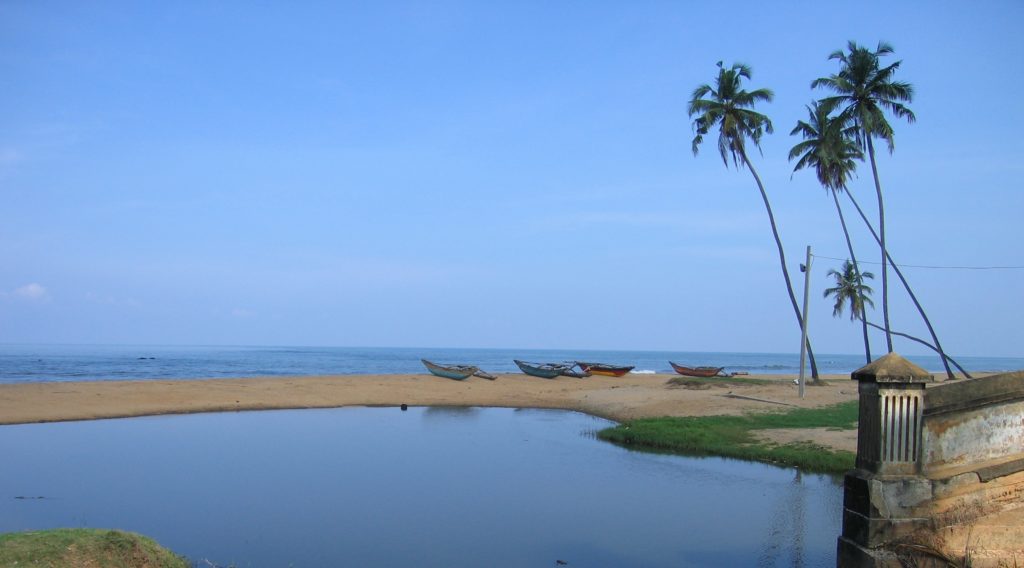
The most difficult time came when neighbors of Nanacy’s sister Thilaka, with whom we were staying, invited me over for a lunch of “curry and rice” which, although it sounds innocent enough, means you’re in for a delightful meal and lots and lots of food. On the other hand “short eats” refers to snack food.
The neighbors had gone all out! There was a huge array of dishes, each more wonderful than the last. It truly was the best food I ate in Sri Lanka. I tried to just eat the vegetarian options but it was clear that my hosts were distraught, though they would never have said anything to me.
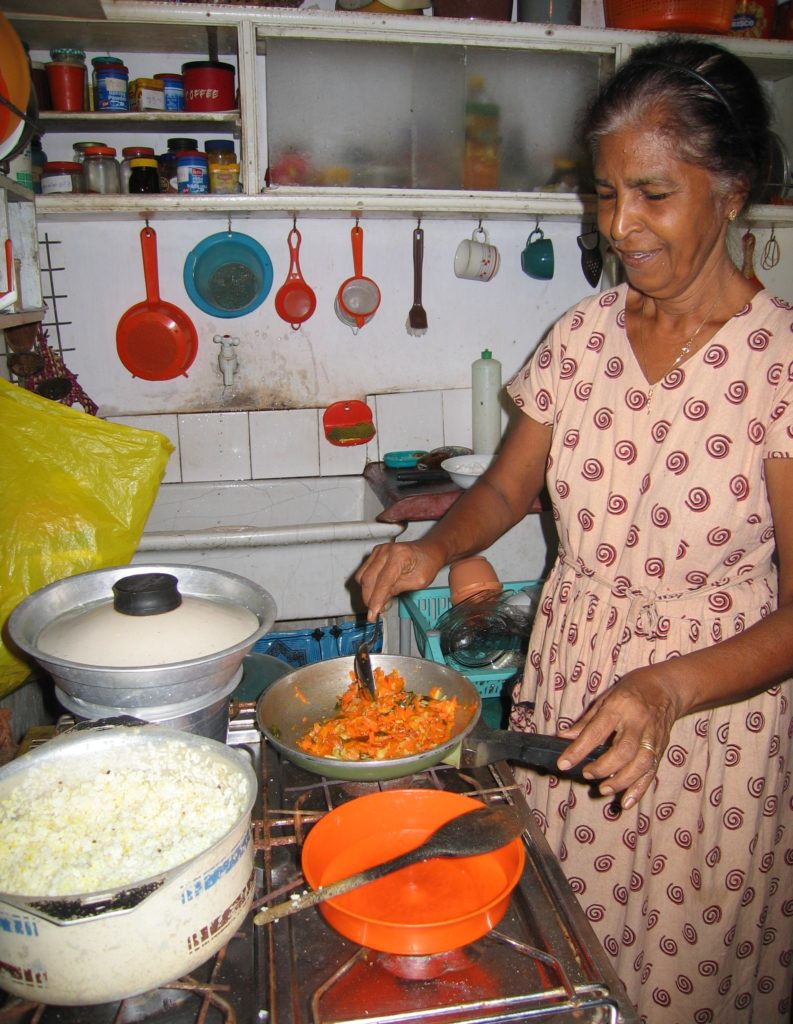
I decided that the appropriate response to their generosity was to eat everything. My hosts quickly became delighted (as did my taste buds)! Only years later did I come to understand that in Sri Lanka (and many Theravada Buddhist countries of South East Asia) Buddhist monks are obliged to accept all food offered to them, even meat, unless they suspect the animal was slaughtered specifically for them.
Since I was most certainly not a monk, I’m sure they couldn’t understand why I was only eating the vegetarian dishes rather than everything that was offered to me. In the end, it was a happy accommodation for everyone involved.
If you have a favorite family recipe and a bit of a story to tell, please email me at santafecook@villasentieri.com and we can discuss including it in the blog. I am expanding the scope of my blog to include traditional recipes from around the country and around the world. If you haven’t seen Bertha’s Flan or Melinda’s Drunken Prunes, take a look. They will give you an idea of what I’m looking for.
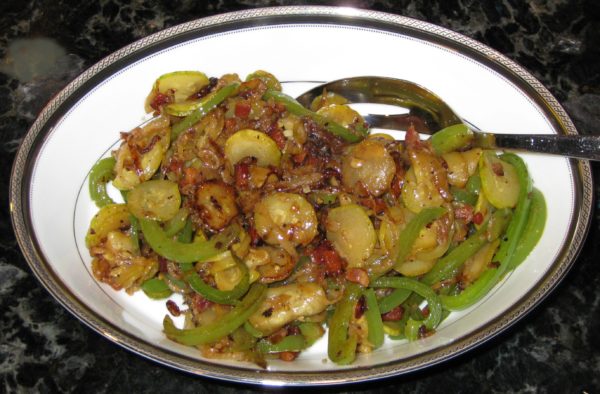
| Prep Time | 15 minutes |
| Cook Time | 15 minutes |
| Servings |
people
|
- 2-3 medium zucchini
- 1 bell pepper or 2-3 Cubanelle or Hungarian Sweet peppers
- 1 medium onion
- 5-6 slices bacon approximately 1/3 pound
- 1/2 - 3/4 teaspoon fennel seeds
- 3/4 - 1 inch stick cinnamon
- 8-10 curry leaves if available
- salt to taste
- black pepper freshly ground to taste
Ingredients
|

|
- Peel and thinly slice the zucchini.
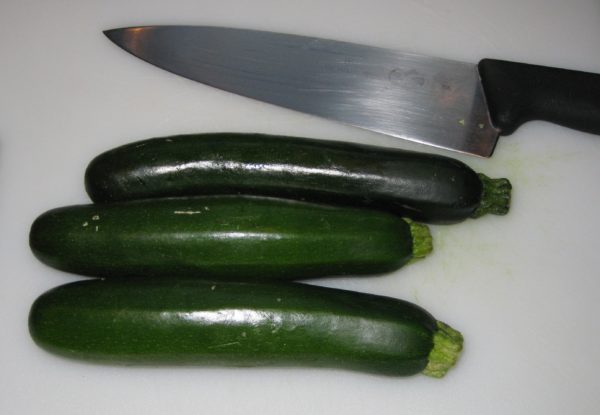
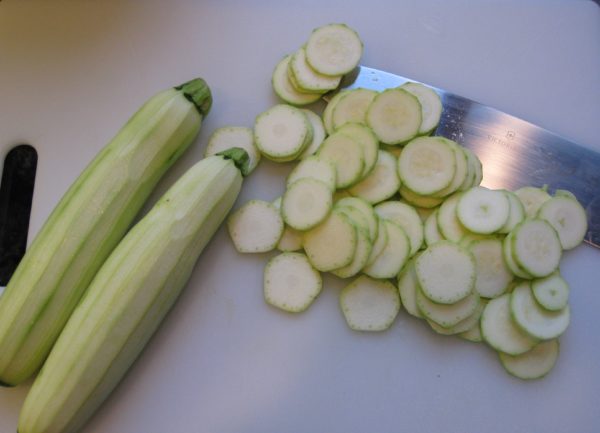
- Core and seed the peppers and cut into thin strips.
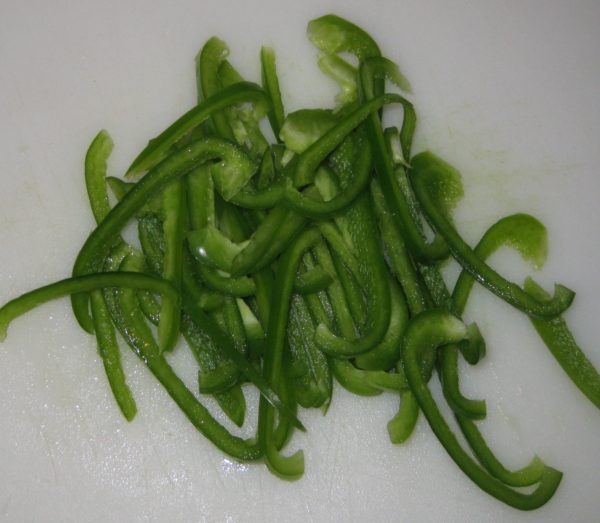
- Thinly slice the onion.
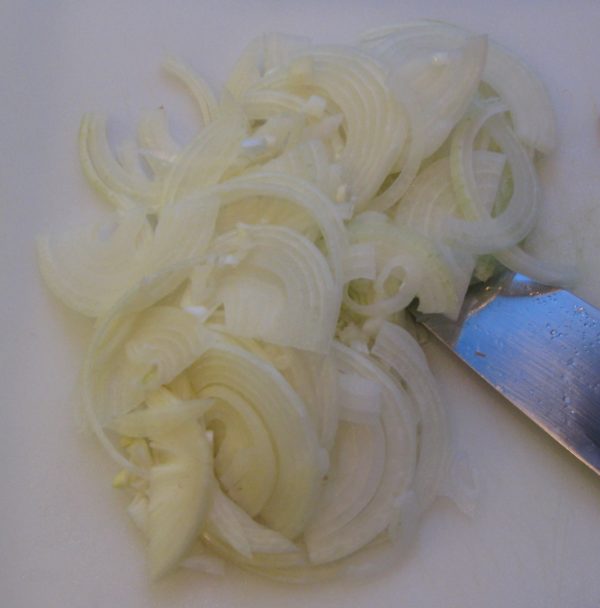
- Dice the bacon.
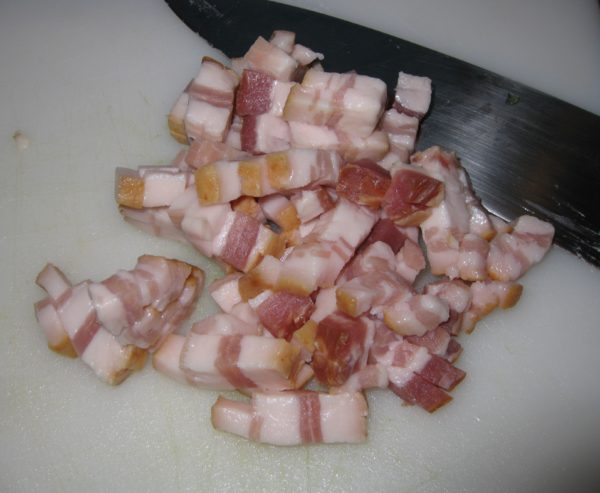
- Crush the fennel and cinnamon in mortar. Reserve.
- In a large sauté pan, fry the bacon until crisp.
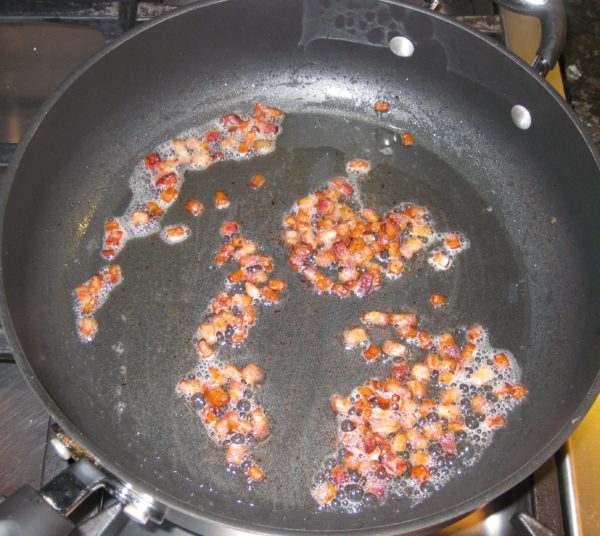
- Remove and reserve the cooked bacon.
- Fry the onion in the rendered bacon fat until golden.
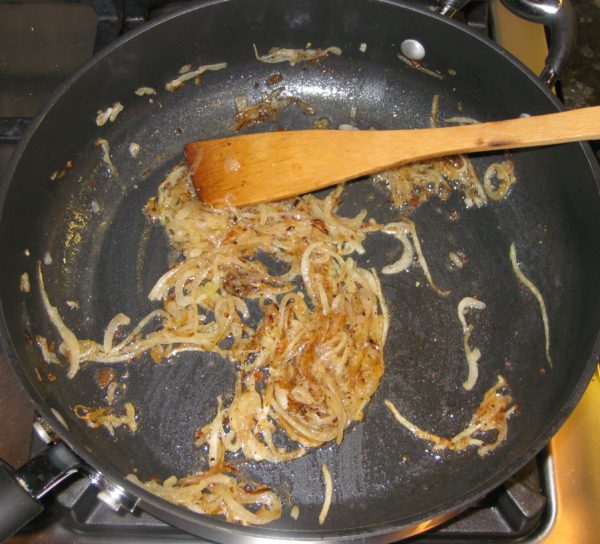
- When the onion is nearly done, add the crushed fennel seed and cinnamon along with the curry leaves, if using.
- Cook a few minutes longer to bloom the spices.
- Add the zucchini and peppers.
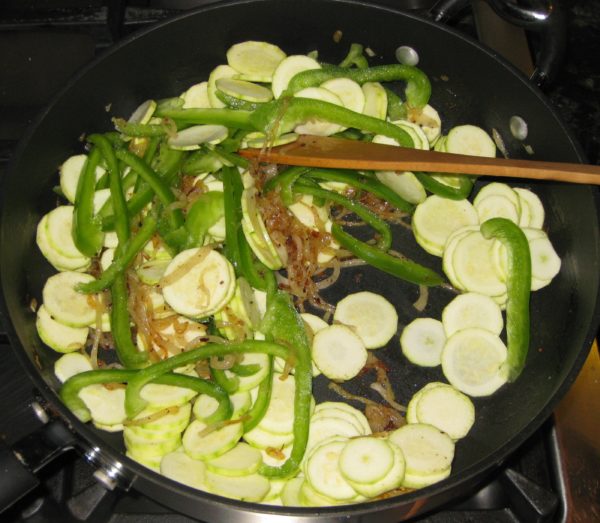
- Stir fry over high heat until the vegetables are pliable but still crunchy.
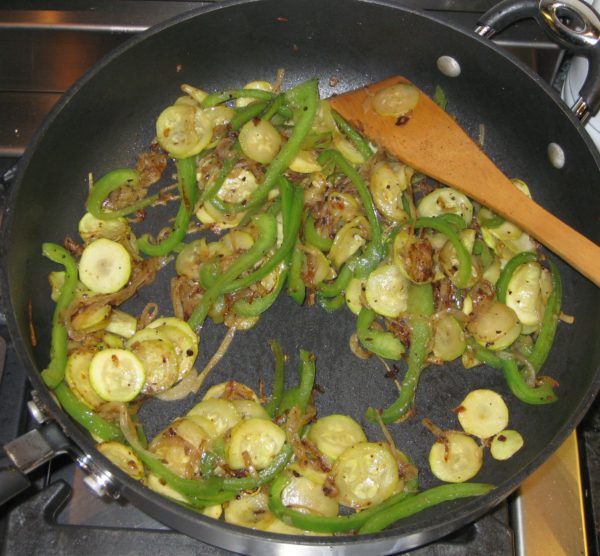
- Season with salt and pepper while cooking, tasting from time to time to adjust the seasoning. The dish is best with a bit of a bite from black pepper.
- Stir the cooked bacon into the vegetables after they have cooked.

Copyright © 2018 by VillaSentieri.com. All rights reserved.

